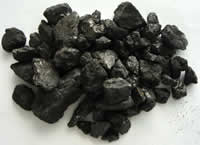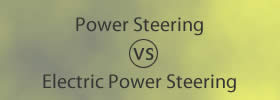Difference between Metals and Nonmetals
Key difference: Metals are solid at room temperature, highly conductive of heat and electricity and are malleable and ductile in nature. Non-metals can be solid, liquid or gaseous at room temperature, and are not conductive, malleable or ductile.
There are various different elements present on Earth. Everything on earth is made of these elements or of a combination of these elements. The earth is so vast that scientists are still finding and classifying new elements. They are even creating new elements via a combination of the existing ones. Currently, there are 118 recognized chemical elements. These are classified into different categories depending on their physical and chemical characteristics: metals, non-metals and metalloids. Majority of the elements are metallic in nature.
Metals and non-metals differ tremendously in their physical and chemical characteristics. On the periodic table, the metals are separated from nonmetals by a zigzag line which passes through carbon, phosphorus, selenium, iodine and radon. These elements and those to the right of them are nonmetals. The elements just to the left of the line are metalloids or semimetals. Metalloids have properties similar to both metals and non-metals. The elements left of the metalloids are metals.
The distinguishing properties of metals and non-metals are listed below.
Metals

Physical Properties
- Usually solid when in room temperature except mercury, which is liquid
- Have a lustrous or shiny look
- Are good conductors of heat and electricity
- Have a high melting and boiling point
- Have a high density, are heavy for their size
- Are malleable, i.e. can be hammered into sheets
- Are ductile, i.e. can be drawn into wires
- Are opaque as a thin sheet
- Are sonorous, i.e. make a bell-like sound when struck
Chemical Properties
- Have 1-3 electrons in the outer shell of each metal atom
- Corrode easily, i.e. damaged by oxidation such as tarnish or rust
- They lose electrons easily
- They form oxides that are basic in nature
- Have lower electro-negativities
- Are good reducing agents
Non-metals
Nonmetals include carbon, hydrogen, nitrogen, phosphorous, oxygen, sulfur, selenium, halogens and the noble gases.
 Physical Properties
Physical Properties
- Are not lustrous, have a dull appearance
- Are poor conductors of heat and electricity
- Are non-ductile solids
- Are brittle solids
- May be solids, liquids or gases at room temperature
- Are transparent as a thin sheet
- Are not sonorous, i.e. do not make a bell-like sound when struck
Chemical Properties
- Usually have 4-8 electrons in their outer shell
- They readily gain or share valence electrons
- They form oxides that are acidic in nature
- They have higher electro-negativities
- Are good oxidizing agents
Image Courtesy: etftrends.com, e-reful.com









Comments
Are non-metals flammable?
emmanuel peters
Tue, 03/18/2014 - 12:17
Thanx it helped 4 my activity
Dharshini
Tue, 01/28/2014 - 18:47
heyyy thanks amazing teaching effect..:)
Asif
Fri, 03/07/2014 - 19:00
Pages
Add new comment